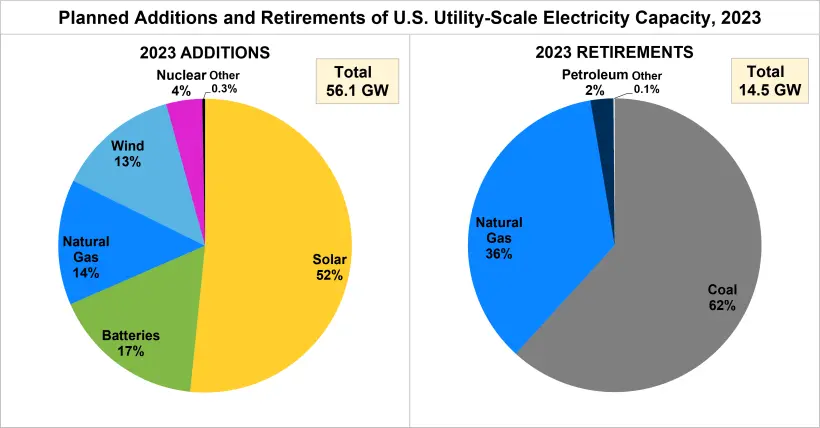86% of New US Electric Utility Generation Capacity Coming from Non-Fossil Fuels in 2023::In 2023, Non-Fossil Fuel Sources Will Account for 86% of New Electric Utility Generation Capacity in the United States
Considering that this is new capacity, not total capacity, it’s a fucking absurd outrage that it’s anything less than 100.0%.
Every percentage point less than that represents us continuing to make the problem even worse even though we goddamn well know better!
What a fucking moron a politician has to be to allow addition of new fossil fueled energy sources, along with everyone who is supposed to supervise that process.
It’s just another sign of the sheer insanity this world is infected with.
Base load
I don’t care what the excuses are; they aren’t valid.
That’s what nuclear is for.
Energy storage
Not always cheap or even feasible. Renewable generation has gotten quite cheap but storage will take a bit to catch on.
How are batteries generating electricity?
They don’t, obviously, but what they do is charge when the spot price for electricity is low, and then discharge when it’s higher.
While not exclusively the case, this drop in price most typically occurs when you have a higher amount of electricity being generated than being consumed, which is usually because of high amounts of renewables because the unit cost of renewables is essentially 0. For example, the middle of the day at peak solar, or windy nights. Fossil fuel generators are burning a commodity with a substantially higher unit cost, so they will mostly turn off (where possible) during these times.
This is why batteries are often counted under renewable, because they shift an abundance of renewable power in to times when there is less or none.
Personally I don’t think we should really be considering the extensive use of rare earth metals as renewable, but that’s a separate point.
We should be calling them “cleaner” not “renewable.” Clean isn’t even really accurate when it comes to their manufacture and construction, but better than coal.
Yeah, I fully understand their benefit to make better use of renewable energy sources. But they are not net-generating power, so their inclusion in the graph is still somewhat misleading.
Single use precharged ones do. Maybe they burned through their stock of batteries for their tv remotes?
Yeah I saw that and laughed.
I think this looks better than it is. Sure, new energy generation coming from green sources is good but proportionally of existing sources it’s very small.
Total energy generated in US is 4 trillion KWh
56 billion KWh out of 4000 billion kWh is small.
You can easily check the percentage of electricity generated by non-fossil fuel sources. By that metric Wind and Solar already surpassed coal in 2022. Ofcourse, total energy also includes transportation and other sectors so that is a different metric. In that case, non-fossil fuel energy accounted for 21% of all energy consumed in the US in 2022.
Even worse, I’d image those numbers are installed capacity, not utilised.
But still 18% Non-Renewable…
The only thing that bothered me is that there is still a net increase in electricity produced using gas :/
Not to be confused with
about a thirdof all generation.The APPA report there uses “nameplate capacity”, which they define as “capacity labeled as operating and restarted as well as capacity that is on standby and mothballed”, which means plants sitting unused are still counted. The EIA gives actual generation:
https://www.eia.gov/tools/faqs/faq.php?id=427&t=3
The numbers are in the same ballpark, but not the same. Percentage-wise, solar and nuclear are quite a bit higher with EIA’s numbers, while wind and natural gas are a bit lower.
I would say that anyone with basic reading comprehension understands the title of the news piece.
I would say if it were the case we would not have clickbaity titles.
Finally, a good step from US.
deleted by creator










